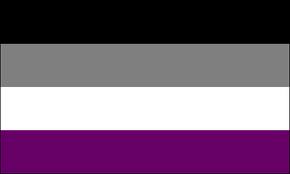
In the summer of 2008, during a lunch break at Wonderland, my friend TJ told me he was asexual.
It took a few years for me to realize I offended TJ because I misunderstood what it meant to be asexual. I learned asexuality is not simply the aversion to sexual intercourse but a sexual orientation. Asexuality is a distinct colour within the visible spectrum of sexuality. Images of Borgs, Namekians, and Sheldon Cooper may come to the mind when one first thinks of asexuality. But these represent crude archetypes of a visible, scattered, and heterogeneous minority of women and men.
Anne Soule, a 25-year-old substitute educational assistant for the Hamilton-Wentworth District School Board, epitomizes the turmoils of an asexually identified person.
“My asexuality had a definite effect when somebody I knew at my (now ex) synagogue sexually assaulted me trying to turn me straight,” she writes in an email. She adds her peers even asked
her if she enjoyed the traumatic experience and if it had turned her straight.
This is one of the many instances in Soule’s life when her sexuality was reduced to either a temporary phase or personality quirk. This reductionism indicates that the education system has failed to teach children about the spectrum of sexuality.
“[My relatives] optimistically believed I might be a ‘late bloomer’ since I never outright expressed any interest in having a significant other of either gender identity or sex,” she explains. When she was going through college, people were wondering why she was not dating.
“Some of my friends didn’t grasp the idea at the beginning; others simply wondered if I was struggling to embrace myself as a gay or bisexual person.”
However, she adds, “I always knew who and what I was, even if I didn’t have the exact vocabulary to express myself at the time.”
Soule describes puberty as “excruciating” because it only made her aware of her differing preferences. She explains how everyone around her exploited her differences — mentally, physically and psychologically — to such a degree that it prompted her to contemplate suicide many times.
Though her sexuality was never questioned, Soule felt like a pariah in school because she never expressed similar interest in physical appearance, dating or pursuing intimate relationships. She also says throughout her adolescence, she had no idea how to describe herself Columbia University graduate student Caroline H. McCrave writes in her Master’s thesis that there is an intermediate category of people in the grey spectrum between asexual and sexual populations.
As well, the population for individuals in the grey spectrum was larger than the population for individuals who identified as asexual. Soule identifies as grey sexual/ asexual because she has “felt drawn toward women at times,” but has “zero interest in intercourse.”
At present, she argues public institutions like schools render asexuality invisible, and says she often gets shot down for advocating for both herself or other sexual minorities.
“I once heard a teacher defend a student’s supposed ‘right’ to misuse the word gay,” she says.
Soule hopes to become a teacher so she can help to spread awareness, to break and challenge stereotypes, and to validate asexual students. She hopes schools and other public institutions can be reformed to acknowledge that we’re all different and shouldn’t feel pressured to be with someone, get married, and have children.
Soule mentions that many of her close friends identify as LGBT or are allied with LGBT causes, and that she has taken part in many Pride events; however, she says not all LGBT groups recognize asexuality.
However, the pressures and difficulties many LGBT adolescents and adults have encountered strongly mirror those of Anna Soule and many other asexual persons.
Years later, my friend TJ explains to me what I didn’t understand back then. “Love. Comfort. Happiness that isn’t autochthonous. These are the things I want to want. It’s what makes us human. I am inactive. Inert. Static. And even if I somehow stumbled and fum- bled into some odd something- ship, it would fail. I am incapable of forming any bond where I have to hold any strength.”
Rajin Patel
Contributor


